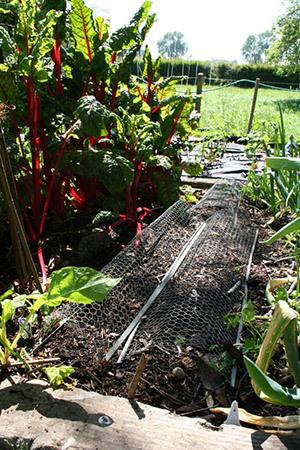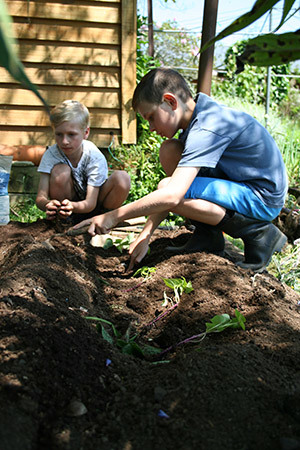Yates Account
Join now
Create a Yates account today!
Sign up to join the Yates Garden Club for monthly e-mails packed with seasonal inspiration, tips for success & exclusive promotions.
Plus if you’re a Garden Club member you can take part in the Yates Growing Community - a blog to share successes, get advice & win prizes in fun challenges along the way!

Forgot password
Enter the email address associated with your account, and we'll email you a new password.

Jamie’s Hot Summer Gardening Tips!
-
Plant seedlings in the evening
-
Use a water sprinkler on a wind-up timer
-
Plant kumara slips when it gets warm enough at night
-
Weed around your sweetcorn
-
Use mulch to keep the soil moist
-
Water tomatoes with a dripper into their roots
Pesky Pests

Don’t you hate it when your new seedlings get wrecked! The pesky pests come along when you aren’t looking and annihilate all your baby plants and hard work. Let me tell you about mine.
First up is my big fat cat Ding. He loves to roll around in the warm dirt and mulch and he also loves to hang out where I am. He doesn’t understand that he can’t just stand all over my plants and squash everything. I must put wire netting over the new plants now, just to keep him off them.
Next up are the pesky birds. Don’t get me wrong, I like birds, but boy do they make a mess. As their favourite food (worms) like to live in my garden compost, the birds have a party, spreading out all the dirt and pulling out my seedlings at the same time. They also like to eat berries and I hate it when they beat me to it. A cool bird prank I learnt from the ‘Play in the Garden’ book is to paint small stones red with dots and put them around the strawberry plants. The birds come and peck the rocks, get annoyed that they aren’t strawberries and then don’t come back. I’m going to try this on my Granny Di’s strawberries this year.
The last pesky pests are slugs and snails. They visit during the night and munch all the new leaves. My brother and I play a game on damp mornings when the slugs are out on the grass and we get 10 points for every slug that we squash under our boots. Granny Di likes to give snails an “aerial burial” – they get thrown up and onto the grass for the birds to gobble.
Good luck with your pesky pests!
Jamie
Big Fat Kumara!

Hi, Jamie here, Yates Kids Gardening Ambassador. Along with my brother Luis, I have planted a kumara patch this year. I love eating roasted kumara, soooo yummy.
The shoots off the kumara are called slips. You can sprout these yourself from a kumara if you have enough time. We visited The Garden Shop in Te Awamutu to find out when to plant the slips, and he said wait until it was above 10 degrees at night time, as they like it warm.
A good trick we learnt is to plant the roots facing upwards, which means curling them into a J shape and packing the dirt around them. This year we planted the slips in trenches like potatoes, but at Hamilton Gardens they plant them in mounds with lots of sand and stones. We lined our trenches with cardboard (not sure if this will work but Dad thought so), then comfrey leaves and Yates Thrive Natural Suphate of Potash with Seaweed mixed with the dirt and compost. The comfrey is like a natural slow release fertiliser and full of good healthy minerals.
Kumara will only grow fat tubers if they are fooled into thinking there’s not enough water, so they don’t just grow lots of roots. Before we learnt about pointing the roots up and lifting the leaves to stop more roots, Mum’s old kumara plot grew the tiniest little tittlers, it was funny. Why don’t you give kumara growing a try?
















Share
Share this article on social media